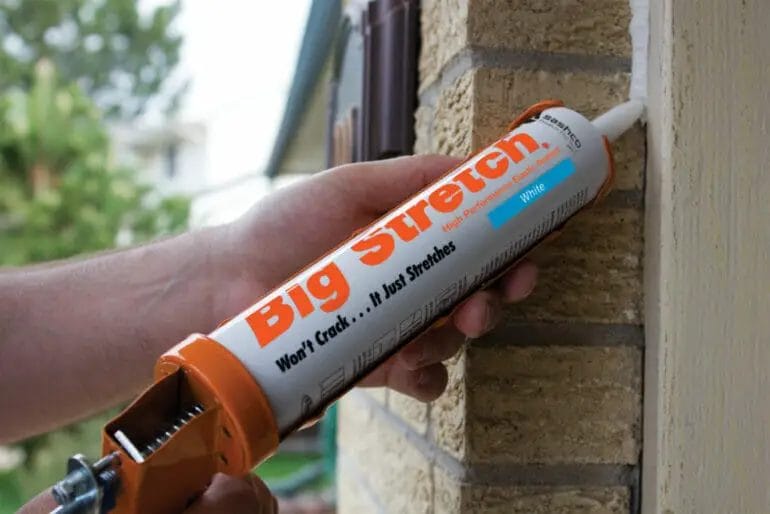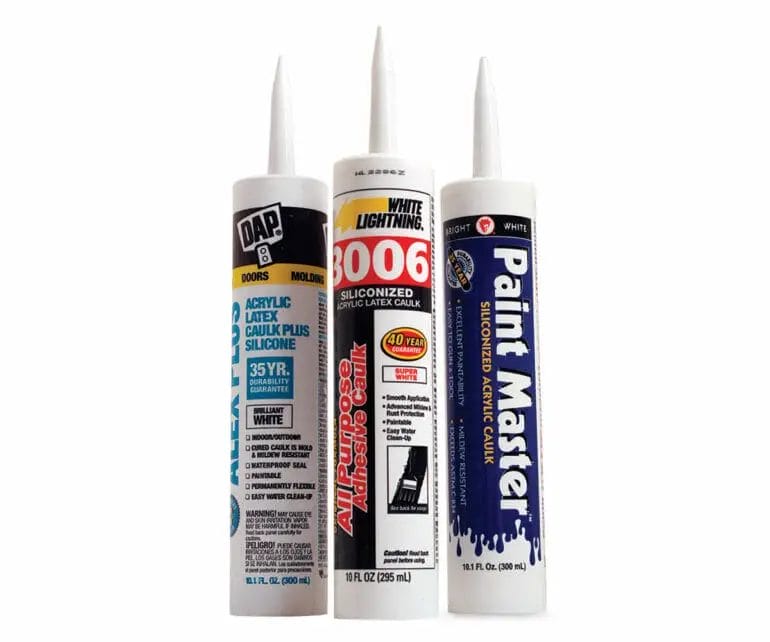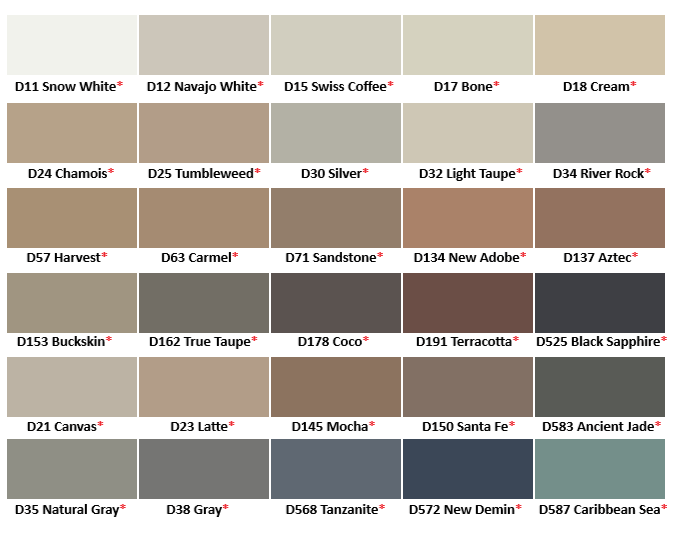When it comes to sealing gaps and cracks, acrylic latex caulk is a popular choice. But what about its waterproofing capabilities? Fortunately, the answer is yes. Acrylic latex caulk is designed to be water-resistant, making it ideal for use in high-moisture areas such as bathrooms and kitchens.
The waterproof nature of acrylic latex caulk comes from its composition, which includes a blend of acrylic polymers that repel water. This means that once the caulk is fully cured, it forms a durable and watertight seal that helps prevent water from penetrating into the gaps or joints.
In addition to being waterproof, acrylic latex caulk also offers other benefits. It is easy to apply, dries quickly, and can be painted over to match any color scheme. Its flexibility allows it to withstand expansion and contraction caused by temperature changes, ensuring a long-lasting seal.
However, it is important to note that while acrylic latex caulk is water-resistant, it is not meant to be fully submerged or used in constant contact with water, such as in swimming pools or water tanks. In these cases, a specialized waterproof sealant should be used.
In conclusion, if you are looking for a versatile and reliable caulking option that offers waterproofing capabilities, acrylic latex caulk is a great choice. Its ability to resist water, along with its other benefits, makes it a popular option for sealing gaps and cracks in

How to Properly Apply Acrylic Latex Caulk for Waterproofing
Acrylic latex caulk is a versatile and commonly used sealant that is perfect for waterproofing various surfaces. Whether you want to seal gaps around windows, repair cracks in your bathroom tiles, or prevent water penetration in outdoor projects, knowing how to properly apply acrylic latex caulk is essential. In this section, we will outline the step-by-step process to achieve effective waterproofing with acrylic latex caulk.
1. Prepare the Surface
Before applying acrylic latex caulk, it’s important to prepare the surface properly to ensure proper adhesion and long-lasting results. Start by thoroughly cleaning the surface using a mild detergent and water to remove any dirt, grime, or debris. Use a scrub brush or sponge to gently scrub the area, ensuring it is free from any loose particles. Then, rinse the surface with clean water and allow it to dry completely before proceeding.
2. Choose the Right Caulk
Acrylic latex caulk is available in different formulations, each designed for specific applications. It’s crucial to choose the right caulk for your waterproofing needs. For indoor projects, such as sealing gaps around windows or filling cracks in tiles, opt for a paintable acrylic latex caulk. If you’re working on an outdoor project, like sealing joints in siding or repairing gaps in concrete, choose a caulk that is specifically designed for outdoor use and can withstand exposure to weather elements.
3. Cut the Caulk Tube Nozzle
Using a sharp utility knife or caulk gun cutter, cut the tip of the caulk tube nozzle at a 45-degree angle. The size of the opening should be proportional to the width of the gap you are filling. For narrow gaps, make a smaller cut, while wider gaps may require a larger opening. Ensure a clean cut to facilitate a smooth and controlled application of the caulk.
4. Apply the Caulk
Hold the caulk gun at a 45-degree angle and apply even pressure on the trigger to extrude a bead of caulk into the gap or crack. Start at one end of the gap and move steadily along its length, maintaining a steady flow of caulk. Apply enough caulk to completely fill the gap, ensuring that it adheres to both sides. Avoid stopping and starting in the middle of the gap to maintain a seamless application.
5. Smooth the Caulk
After applying the caulk, use a caulk smoothing tool or a wet finger to smooth and level the caulk bead. This step is essential to create a neat and professional finish. Wetting your finger or the caulk smoothing tool with a soapy water solution can help prevent the caulk from sticking. Gently run your finger or the tool along the caulk line, removing any excess caulk and creating a smooth surface.
6. Allow the Caulk to Dry
Give the caulk sufficient time to dry and cure before exposing it to water or other elements. The drying time can vary depending on the caulk brand and environmental conditions. Generally, acrylic latex caulk takes around 24 hours to dry completely. Follow the manufacturer’s instructions for specific drying times and avoid disturbing or touching the caulk until it is fully cured.
7. Paint or Finish (if applicable)
If the caulk is paintable, you can apply paint over it once it has fully dried. This step is especially important if you want to achieve a seamless and finished look. Choose a paint that is compatible with the caulk and apply it according to the paint manufacturer’s instructions. If you’re not planning to paint over the caulk, ensure that it blends well with the surrounding surface for a visually appealing result.
In summary, applying acrylic latex caulk for waterproofing involves proper surface preparation, selecting the right caulk type, cutting the caulk tube nozzle, applying the caulk evenly, smoothing the caulk bead, allowing it to dry, and optionally painting or finishing the caulk. By following these steps, you can effectively seal gaps, cracks, and joints, providing long-lasting waterproofing protection to your surfaces.

Tips for Improving the Waterproofing Effectiveness of Acrylic Latex Caulk
Acrylic latex caulk is a versatile and commonly used material for sealing gaps and joints in various surfaces. It provides a waterproof barrier, preventing moisture from seeping through and causing damage. However, to ensure the utmost effectiveness of acrylic latex caulk in waterproofing, certain tips and techniques can be followed.
1. Choose the Right Acrylic Latex Caulk
Not all acrylic latex caulks are created equal, and some may offer better waterproofing properties than others. When selecting a caulk product, look for one that specifically mentions “waterproof” or “water-resistant” on the label. These caulks are designed to withstand exposure to moisture and provide a strong seal.
2. Prepare the Surface
Proper surface preparation is crucial for achieving optimal waterproofing results. Clean the area thoroughly, removing any dirt, dust, or debris. Use a mild detergent or a suitable cleaning solution to remove any grease or oil residue. Ensure that the surface is dry before applying the caulk.
3. Use a Caulk Gun
While it may be tempting to apply caulk directly from the tube, using a caulk gun allows for better control and precision. A caulking gun ensures a consistent bead size and smooth application, leading to a more effective waterproof seal. It also reduces hand fatigue and allows for easier maneuverability in tight spaces.
4. Apply Caulk in a Continuous Bead
When applying acrylic latex caulk, it is essential to create a continuous bead of caulk along the joint or gap. Start at one end and apply steady pressure on the caulk gun to maintain a consistent flow of caulk. Avoid starting and stopping as this can create weak points in the seal. A continuous bead ensures better waterproofing and a more robust seal.
5. Smooth and Tool the Caulk
After applying the caulk, use a caulk smoothing tool or a wet finger to smooth and tool the caulk. This helps to achieve a neat and even finish, while also ensuring that the caulk is properly adhered to the surface. Smoothing and tooling the caulk also eliminates any air pockets or gaps, further enhancing its waterproofing effectiveness.
6. Allow Sufficient Drying and Curing Time
Acrylic latex caulks require time to dry and cure fully. Follow the manufacturer’s instructions regarding the recommended drying and curing time. Avoid exposing the caulk to moisture or significant temperature changes during this period. Allowing sufficient drying and curing time ensures that the caulk forms a strong and waterproof seal.
7. Regular Maintenance
Even with proper application and curing, acrylic latex caulk may require periodic maintenance to uphold its waterproofing effectiveness. Inspect the caulked areas regularly and address any signs of deterioration, cracking, or peeling promptly. Remove any damaged or deteriorated caulk and reapply a fresh bead to maintain the waterproof seal.
In summary, improving the waterproofing effectiveness of acrylic latex caulk involves choosing the right caulk, preparing the surface properly, using a caulk gun for application, creating a continuous bead, smoothing and tooling the caulk, allowing sufficient drying and curing time, and performing regular maintenance. By following these tips, you can enhance the performance of acrylic latex caulk and ensure long-lasting waterproof seals.

Comparing Acrylic Latex Caulk to Other Waterproofing Options
When it comes to waterproofing, there are several options available in the market. One popular choice is acrylic latex caulk, known for its versatility and ease of use. In this section, we will compare acrylic latex caulk to other common waterproofing options to help you make an informed decision.
1. Acrylic Latex Caulk
Acrylic latex caulk is a commonly used waterproofing option for various applications, including sealing gaps, cracks, and joints in different materials such as wood, metal, and concrete. It is easy to apply, dries quickly, and provides a flexible and durable seal.
Pros:
- Easy to apply
- Dries quickly
- Flexible and durable seal
- Can be painted over
- Resistant to mold and mildew
Cons:
- Not suitable for areas exposed to high temperatures
- May not adhere well to certain materials
- Requires regular maintenance and reapplication
2. Silicone Sealant
Silicone sealant is another popular option for waterproofing. It offers excellent resistance to moisture, UV rays, and extreme temperatures. Silicone sealants are commonly used in areas prone to constant water exposure, such as bathrooms and kitchens.
Pros:
- Highly resistant to moisture
- UV and temperature resistant
- Long-lasting seal
- Flexible
Cons:
- Not easily paintable
- Can be more expensive than acrylic latex caulk
- Requires proper surface preparation for optimal adhesion
3. Polyurethane Sealant
Polyurethane sealant is a waterproofing option known for its excellent adhesive properties and durability. It is commonly used in areas exposed to heavy foot traffic, such as driveways, sidewalks, and basements.
Pros:
- Excellent adhesion to various materials
- Highly durable and resistant to wear
- Can withstand heavy foot traffic
- Flexible
Cons:
- Not easily paintable
- Can be more expensive than acrylic latex caulk
- Requires longer curing time
- May release strong odor during application
4. Epoxy Sealant
Epoxy sealant is a popular choice for waterproofing concrete surfaces. It provides a strong and long-lasting seal, making it suitable for areas exposed to heavy moisture and chemicals.
Pros:
- Highly resistant to moisture and chemicals
- Durable and long-lasting
- Can be used on various surfaces
- Excellent adhesion
Cons:
- Not easily paintable
- Requires proper surface preparation for optimal adhesion
- Can be more expensive than acrylic latex caulk
- Requires longer curing time
5. Bitumen Sealant
Bitumen sealant, also known as asphalt sealant, is commonly used for waterproofing roofs and other outdoor surfaces. It offers excellent resistance to water and UV rays.
Pros:
- Highly resistant to water and UV rays
- Durable
- Can be used on various surfaces
- Excellent adhesion
Cons:
- Not easily paintable
- Requires proper surface preparation for optimal adhesion
- Can be more difficult to apply compared to acrylic latex caulk
- May release strong odor during application
Summary
Choosing the right waterproofing option depends on your specific needs and the application area
Common Mistakes to Avoid When Using Acrylic Latex Caulk for Waterproofing
Acrylic latex caulk is a popular choice for waterproofing various surfaces due to its excellent adhesive and sealing properties. However, improper use or application can result in ineffective waterproofing and potential damage. To ensure successful waterproofing with acrylic latex caulk, it is important to avoid these common mistakes:
1. Not Cleaning the Surface
One of the most common mistakes is neglecting to clean the surface properly before applying acrylic latex caulk. Any dirt, dust, or debris on the surface can prevent the caulk from adhering effectively, leading to weak or ineffective waterproofing. Before applying the caulk, thoroughly clean the surface with a mild detergent or solvent to remove any contaminants.
2. Applying Caulk on Wet Surfaces
Moisture can hinder the caulk’s adhesion and affect its performance. It is important to ensure that the surface is completely dry before applying acrylic latex caulk. If you are working on a wet surface, wait until it is dry or use a moisture barrier to prevent any water from compromising the caulk’s effectiveness.
3. Using Expired or Low-Quality Caulk
Using expired or low-quality caulk can lead to poor waterproofing results. Check the expiration date of the caulk before using it and ensure that it is in good condition. Using a high-quality caulk specifically designed for waterproofing applications is essential to achieve long-lasting and effective results.
4. Incorrect Application Technique
Improper application technique can result in uneven or weak caulking. It is important to use a caulk gun or applicator tool to apply the caulk smoothly and evenly along the desired area. Apply a continuous bead of caulk, maintaining consistent pressure and speed to ensure proper coverage and adhesion.
5. Neglecting to Allow Sufficient Drying Time
Rushing the drying process can compromise the effectiveness of the caulk. It is crucial to allow sufficient drying time as per the manufacturer’s instructions. This ensures that the caulk properly cures and forms a strong, waterproof seal. Premature exposure to water or moisture can result in caulk failure, allowing water seepage.
6. Overfilling Gaps or Cracks
Overfilling gaps or cracks with caulk is a common mistake. Excess caulk can lead to messy appearances and poor adhesion. It is essential to apply the right amount of caulk to fill the gap or crack adequately without excessive smearing. Use a caulk smoothing tool or a damp finger to create a neat finish.
7. Not Checking for Movement
Some surfaces, such as joints or areas prone to movement, require flexible caulk that can accommodate expansion and contraction. Neglecting to use an appropriate flexible caulk can result in cracking or separation over time. Always consider the movement of the surface and choose a caulk that is designed to withstand it.
8. Lack of Regular Maintenance
Even with proper application, acrylic latex caulk may require regular maintenance to ensure its effectiveness and longevity. Regularly inspect the caulked areas for signs of wear, cracking, or separation. Address any issues promptly by reapplying or repairing the caulk to maintain a watertight seal.
In summary, by avoiding these common mistakes and following proper application techniques, you can achieve successful waterproofing with acrylic latex caulk. Remember to clean the surface thoroughly, ensure dry conditions, use high-quality caulk, apply it correctly, allow sufficient drying time, avoid overfilling, select flexible caulk for movement-prone areas, and perform regular maintenance. By doing so, you can ensure a durable and effective waterproof seal for your surfaces.
FAQs
Is acrylic latex caulk waterproof?
Yes, acrylic latex caulk is generally waterproof. It forms a durable seal that is resistant to water, making it suitable for use in areas prone to moisture, such as bathrooms and kitchens.
Conclusion
In conclusion, acrylic latex caulk is indeed waterproof, making it an excellent choice for sealing gaps and cracks in various applications. Its water resistance properties make it suitable for use in bathrooms, kitchens, and other high-moisture areas where water exposure is common.
Acrylic latex caulk not only provides a reliable barrier against moisture but also offers flexibility and durability, ensuring long-lasting sealing performance. Its ability to adhere to a variety of surfaces, including wood, metal, and concrete, makes it a versatile option for both indoor and outdoor projects.
Whether you’re looking to prevent water intrusion, improve energy efficiency, or enhance the overall appearance of your home, acrylic latex caulk is a waterproof solution that can meet your needs with ease.
